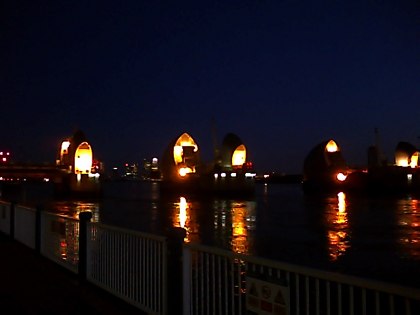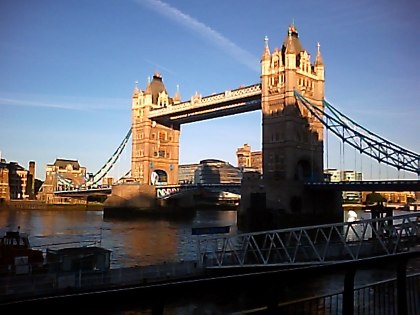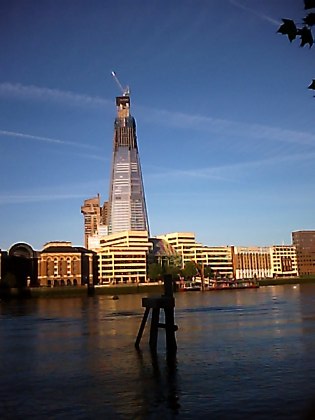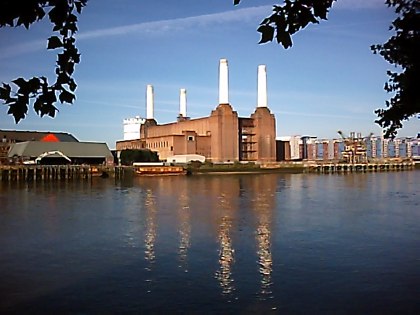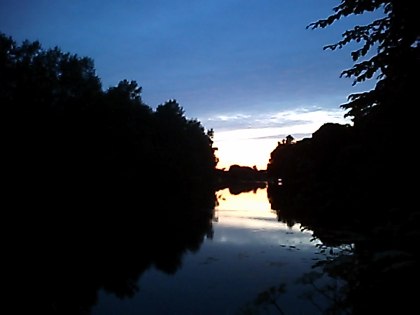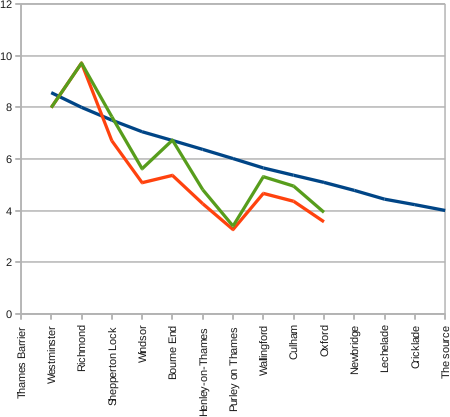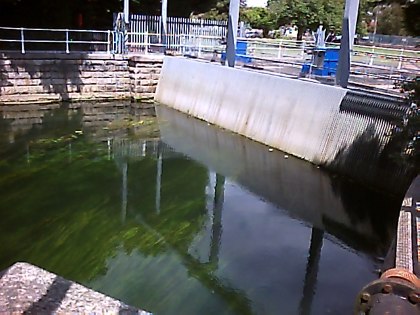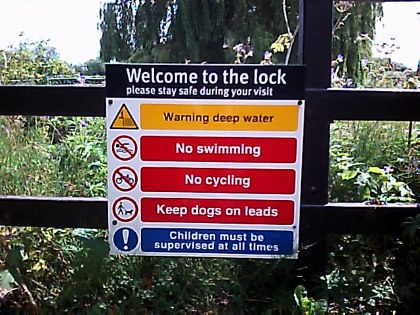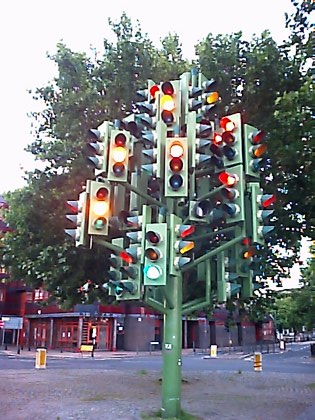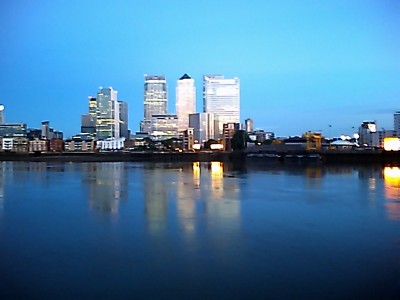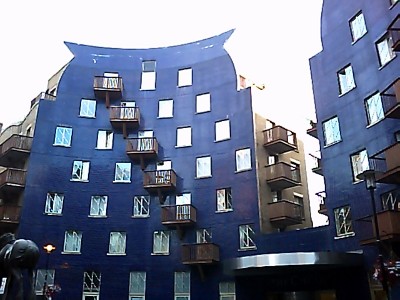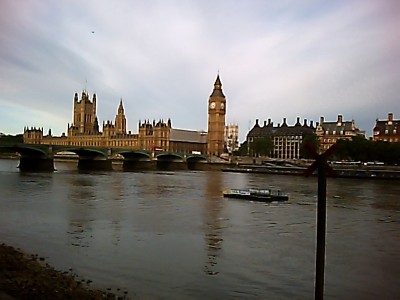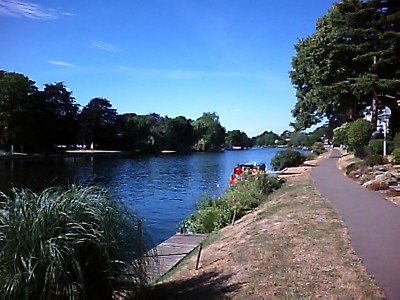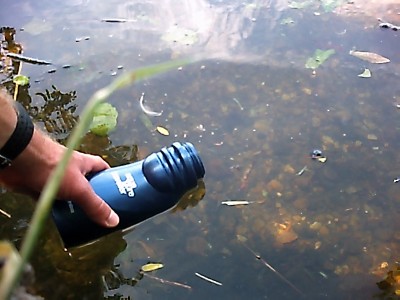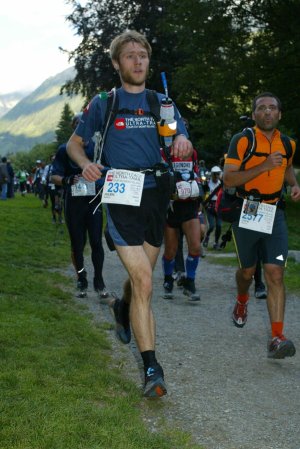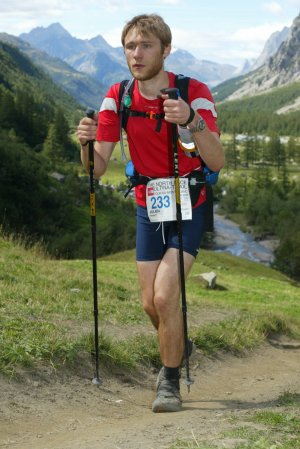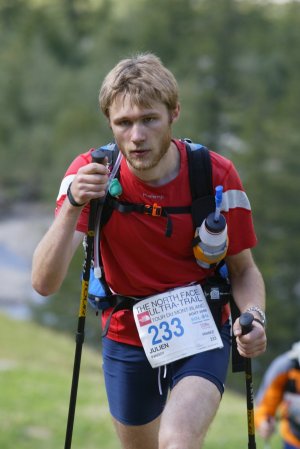Last week I've attempted
La Petite Trotte à Léon (PTL) along with Leo and Sven, forming The Chameleons, team 39. 245km and 21,500m ascent in less than 114 hours. It's a team event with very little support and no ranking. This story obviously only reflects my own point of view and might differ from other members'. Furthermore, I've deliberately omitted a few details related to the team dynamics.
In order to make the story a bit more lively, I've embedded the
tweets (*) I've posted during the race straight into the text like this (in a slightly modified order, with original spelling mistakes):
arrived in chamonix. sunny and 28 degrees. mont-blanc looks good :)
A lower-key event
As compared to the UTMB, the PTL is a very low-key event. It's meant to be a more friendly and runners are more free. The rules are very flexible, and it was even suggested to book a 5-star hotel on the way if we wanted to. It's more a very fast hike rather than a run, where a bunch of kids have been left on the loose in the great outdoors :) . Quite funny to see the difference with the UTMB, organised by the same team.
chilling out before the briefing...
The atmosphere during the pre-race briefing was nice, you could ask information on the route directly to the organisers (Jean-Claude Marmier and Michel Poletti), which is pretty cool. There were minor last minute changes on the route, and we learnt that there was eventually no need to take pictures as evidence of walking as a team.
Night start
I was surprised to see a lot of people for the PTL start at 10pm on Tuesday, including Jon, CO and
Hardmoors 110 organiser. The supporters certainly outnumbered the runners by a long way! The atmosphere was rather pleasant, much less stressed than on the UTMB start.
on the starting line. it's gonna be legendary!
We started way too fast, cruising at UTMB speed, and the organisers admitted later they were a bit scared by that. Then most teams became more reasonable and slowed down. Very quickly the rain started falling as expected, and kept on pouring until 2am "only" (we expected 2 more wet hours). It was quite funny to see groups of 3 lights moving up La Balme instead of the continuous snake of lights during the UTMB.
steady pain until 2am.felt quite sleepy until a nice technical scramble
i meant steady rain!
Immediately after leaving the regular UTMB path at La Balme, we got a taste of what the PTL is all about on the ascent to the Col d'Enclave: nice
scramble up, where it would be difficult to progress without helping oneself with hands (and you know how I hate using hands when hiking/running). Sven felt a bit weak at the Col Enclave, looking pale, hypoglycemia probably, but soon recovered. I reckon I was not efficient uphill that day either as soon as we were above 2500m.
Wednesday
The day was generally cloudy, with a bit more sun in the evening. The route was much more demanding than the UTMB one (and apparently more demanding than last year's PTL too). It's often off path, a little bit of scramble or steep scree here and there, technical boulder fields, river crossings, ... All great fun! GPS trace is compulsory for fast progression. There aren't many flat sections, and some places seem to be little known.
Because of the previous night out running, I often felt sleepy for short periods of time, but nothing too bad. A food point was manned at the Col du Petit Saint Bernard, where we got a bit of hot food for the first time since the start.
just got some hot soup. doing well. spirit is high. might push to morgex tonight
In the evening, an endless boulder field with no path led us the the amazing Bellecombe valley in which lies a superb turquoise lake. Then the mist fell down along with the night, and the ascent to refuge Deffeyes was rather not pleasant. All we could see were three gloomy lights following us at a distance. Anyway, we arrived there at 9:46pm, exactly as planned, got a hot meal and bed.
slept at refuge deffeyes. yesterday was tough with lots of boulder fields. generally ok
Thursday
We left "late" at 4:30am, behind schedule and forgot to plug in the battery pack to the GPS beacon that morning. So we were not tracked until late in the morning, but believe us, we went down on foot! As we woke up, the mist had gone and the stars were shining. The whole day was very sunny, and I got a bit of a sunburn. We got lost on the boulder field down to Morgex, but nothing too serious. Spare bags and a bit of hot food at Morgex made us good. At that point, Sven started to be stressed by time, despite being in the top 15.
leaving morgex behind schedule. bodies and minds tired but fine
We then climbed up 2100m (in the heat) in one go up to Tricony, catching up time, despite Sven's knees that started playing up with a tendonitis. I have to say that I felt physically great on that day. Great view on the Mont-Blanc chain from the Italian side.
just finished a 2100m ascent :) feeling strong. slowly catching up with schedule
Then we slowly went back down to the refuge Bonatti and joined the UTMB path. At that point, things started to get wrong with the team. To put it simply, Leo was not as fast as Sven expected and the latter went increasingly nervous about the time limits. That's only when I realised we hadn't had enough team bonding activities. After a heated argument, it was decided to eat at the restaurant and to sleep in Arnuva, in the UTMB food point marquee, instead of refuge Elena as previously planned. We thought the restaurant bill would be a good omen for team 39:
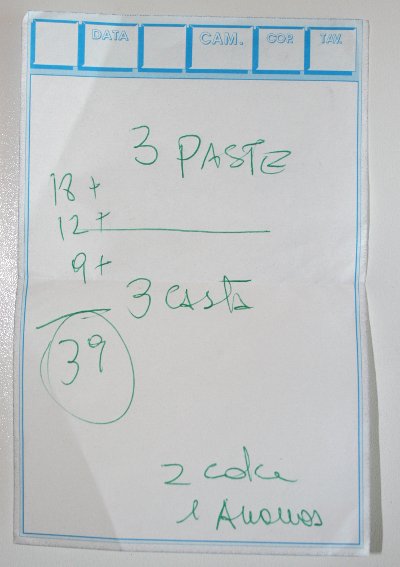 Team spirit
Team spirit
arnuva. still feeling great :D , still late. must work on team management skills :(
My main mistake with the PTL adventure is how I've overlooked the team aspect of the event. I naively thought that if 3 runners say they just want to finish the loop in time it's going to be OK during the race. Wrong! Things are much more subtle than that. I think I was the only one in the team truly believing in that. As a "principal investigator", I failed to manage a team with diametrically opposed expectations and abilities. When I realised things were going pear-shaped, it was a bit too late. During the descent to Bonatti, I thought about enforcing 3 rules to help the team going, but never actually disclosed them:
- We started as a team, we'll finish as a team (the only exception being serious injury).
- The official language of team Chameleons is English.
- I will have the last word in all decisions (though, we must discuss thoroughly all strategic options).
The reason why it took me so long to react is that I believed we would go as 3 equal runners, whereas I was implicitly considered as a team leader by the others. That became clearer when I started to play the buffer between Sven and Leo. Sven admitted later that I should have been giving indications rather than advice. He was definitely right.
The disaster
We got up at 2am and started ascending the Col du Ban Darray. On a scree slope just under the col (which is pronounced like "banc d'arrêt",
ie. "stop bench"), passed half-way at about 128km on the route, my kidneys started to be a bit painful. I can go through a lot more pain if it's muscular or in the tendons, but I reckon I was afraid of the consequences of a kidney failure in a remote alpine area. The first thing I thought about was to stop and lie down there for an hour. That would have been actually the best solution. That's exactly what I should have done.
Unfortunately, as part of a team, things were not that simple. Sven was persuaded that we couldn't waste time and encouraged me to carry on, whereas Leo was more reasonnable and pushed me to come down if things were not feeling right. Earlier in the event, I was bridging the gap between Sven and Leo but as soon as I got my own problem, this fragile balance collapsed. I was torn between my interest and the team's. The decision had to be taken quickly in order to avoid time waste, and I took the wrong one. It's a beginner's mistake to take decisions so quickly in ultra. I decided to go back down on my own to leave Leo and Sven a chance. Despite my insistence, Leo decided to go back down with me, breaking the so-far unrevealed team rule #1. Sven carried on with an Italian team.
going down to arnwva after mild kidney pain :(( sven carries on
I was terribly disappointed I had to go down. I also felt very bad for Leo who went down with me. I was not only responsible for one, but for two drops out... It was weird to see the other teams climbing up as we walked down to Arnuva, where we hitch-hiked to Courmayeur.
back to arnuva. feel better. shouldn't rush this decision but had to for the team to take their own one
Same feeling looking at the runners kitting up for the CCC in Courmayeur, fresh and eager to go when I'm stopping. And again later in Cham' with the UTMB. For the first time I lived the start of the UTMB as a supporter. Jon looked rather happy :) . Definitely worth it if you're in the region at the end of August!
back in chamonix. race doctor said it doesn't look too serious. wish i was back up there...
I recovered quickly and started to wonder whether I had been soft on this decision. I felt physically very good otherwise, I think I could have made it to the finish line. I bitterly regret I didn't take a one-hour pause up there. I should been a bit more selfish and have used rule #3 and taken the pause. After all, we had all waited for Leo and Sven already in the past... I wish I had taken a wiser decision. At least this allowed Sven to finish early, and with a team he appreciated more. Given his generalised tendinitis spread over his entire legs, it's an amazing achievement! Leo and I came back to Chamonix on Saturday night to see him finishing. He didn't look too bad. Congratulations!
sven just finished. congratulations!
Equipment
One thing I'm totally happy with is the gear selection we made (
full list). As
previously mentionned, the OMM Classic Marathon 25L backpack was a very good choice for the purpose (thanks to Leo). It's fairly waterproof, it features lots of accessible pockets/nettings for cereal bars and chestnut spread pouches, or even wet clothing, and the integrated half-length sleeping mat (Duomat) actually makes a big difference when sleeping on wet grass, despite its very thin design (5mm).
I might add two things to my gear list. I would probably go for a poncho on top of the jacket to protect the bag. I might also take a bottle in one of the netting, as they're much easier to refill on the move.
After finishing, I noticed a massive 5cm-long crack in the sole of my beloved Flyroc shoes. RIP.
The GPS (with the official track and significant waypoints) is definitely required to progress by night unless you're a navigation genius or have recce'd the whole route beforehand.
Thoughts
I should obviously drink more! During the night at Arnuva I was too cold to bother getting up for water. Big mistake! That's probably why my kidneys were not too happy with me...
I think I could have made it back to Chamonix the noble way. And the whole team too. Maybe not in 102 hours like Sven with his adoptive team the "2 be 3", but we could probably have managed something in about 110 hours, as originally planned. After all, we were placed around 12
th when I decided to stop, and at least 18 teams finished. As for the team, I think more training all together was necessary to get to know each other better, and all potentially problematic situations should have been discussed beforehand. That way the decisions wouldn't need to be taken in a cold wind at 3am on a scree slope at 2500m, because everything would have been carefully thought in advance.
I feel mentally stronger after this aborted event. This mainly is due to the multi-day nature (although truncated) of the event. You can't just take it as a one-off push to the finish line. You need to think ahead, and be ready to take longer term decisions, you can't simply focus on finishing. It's rather strategic: where to sleep in order to avoid the technical sections by night? How much to sleep to keep efficient without wasting time? The team dynamics also taught me quite a bit on myself.
With Twitter and GoogleEarth, a one-way communication between you and me was established. It's strange to think that people are following exactly where I am when up there... I'm not sure I would like to have real-time feedback, though. What do you think about the experience as a follower?
a big THANK YOU to all of you for the support messages. i'm physically fine, but terribly disappointed
So I guess, I'll try next year, with more team training (and more training in general)... Who knows, it might even be harder!
Ultra disappointed
(*) Originally on chameleons39, renamed for 2010.
